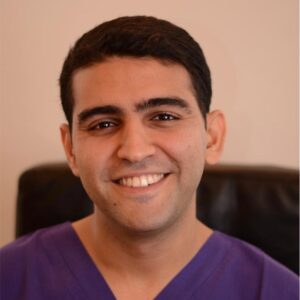Is there a difference in success rates of IVF with donor eggs concerning a woman’s age?
Is there any correlation between the age of the woman and IVF with donor eggs success rates?
Age has a profound impact on a women’s ability to get pregnant both naturally or with IVF using her own eggs. Even in egg donation programs, it is an important factor because patients are usually older, so there’s a higher probability of some uterine problems. It means that implantation rates increase and abortion risk decreases.
The situation differs if donor eggs are used in IVF treatment. Here, the age of the egg is crucial. The age of the potential mother is less important. Because of this, all clinics make every effort to ensure that donors are in the best state of health. They have to pass medical tests, screenings, and psychological evaluations. It is always clearly defined in the regulations of every clinic.

When you go through egg donation treatment, the donor that is used for you usually is around the age of 18, for example in Cryos is 18 to 32 years old, so we choose women that are young, they have healthy eggs and preferably those who have had children themselves or proven fertility. Therefore, the age of the egg is what is important here and the quality of the egg is important here. The age of the woman, most countries allow women up to the age of 50 or recommend that women up to the age of 50 use donor eggs as long as you are healthy to carry a healthy pregnancy, as long as the uterus is healthy and can allow an embryo to implant, then the age of the woman is irrelevant here and it is the age and quality of the egg of the donor that is important.

After 45-47, the probability of success starts to decrease little bit, not a lot but little bit and after 50 decrease more actively because of the uterine problems and general health problems. This difference is not very pronounced because the main issue is the embryo quality and possibility of preparing the uterus well. If a woman was like 15 years in menopause sometimes, the uterus does not react well to replacement hormonal therapy. We don’t arrive to receive good quality and good thickness of endometrium and in this case, unfortunately, we have less chance that women become pregnant. Also after 50, we have much more chances to have obstetrical problems after egg donation like gestational diabetes, thrombosis, high blood pressure, placenta problem, and premature delivery. So, the health of women at 50 years old generally is not as good as a 20 years old and this is the main issue. Pregnancy is quite a big stress for a woman’s body and of course, necessary to be ready for that.

If we move to egg donation, is the woman’s age a factor anymore? And the good news is that as long as we test the embryo’s and as long as the uterus is fine, the answer is that the difference is very minimal. That is why for example, in the US the American Society of Reproductive Medicine allows us to use egg donation, up to 55, realising as long as the uterus does not change ( my opinion of course is to test the embryo’s), so as long as we have a normal embryo, at that point if we transfer it to a woman in her thirties, or in their fifties, the success rate is very similar. The key of course, is that the uterus should be in very good condition because as women get older there are more fibroids and more changes in the uterus. Another very important part is that it is great that the success rate is very high despite the age factor but another important component is that the pregnancy is carried in a safe way. We always talk about it and the success of egg donation. We have to think of the end of the process. Not only can I get pregnant successfully but can carry the pregnancy safely. Things such as pre-existing conditions like obesity, high blood pressure, pre diabetes, as women get older, can become a much bigger issue for the pregnancy so that is the second part. We are very successful as women get older but we want to make sure that you are entering this pregnancy as healthy as possible.

Yes, there is. Of course, the growing woman’s age can bring other issues which can interfere with the success rate of fertility treatment even with donor eggs. This means that the woman could have had previous surgeries, the quality of the endometrium could be lower. So yes, with the growing woman’s age, even the success rate of egg donation could go down.

Since oocytes are donated, the oocyte age, which is very important for the success rate, is already guaranteed. By law, donors must be under 35 years old, although in our centre, the vast majority of donors are under 30. The age of the recipient of gametes doesn’t have any influence, in principle, unless there is a uterine pathology, it shouldn’t influence the pregnancy rate.
It should be noted that patients who come to egg donation are usually older than 40 years old, and at these ages, the probability of having a uterine problem, for example, types of myomas, adenomyosis, and so on, is higher and can influence a lower implantation rate and a higher risk of abortion.

The oocyte age is the main factor for the success rate. As part of our quality control, we guarantee the age of the egg donor to be between 20-30 years of age and to have proven motherhood. With this range of age, we reduce the possibility to obtain aneuploid eggs. So, this way of selection reduces the rate of miscarriage and increases the rate of ongoing pregnancy. Otherwise, the age of the recipient of gametes should not influence the pregnancy rate, unless there is a uterine pathology.
It should be noted that patients who come for egg donation are usually older than 40 years old, and at such age, the probability of having a uterine problem like types of myomas, adenomyosis, and so on, is higher. It can influence a lower implantation rate and a higher risk of abortion.

The success of any given assisted reproductive treatment depends on various factors, in particular, when dealing with female factor infertility, age is a crucial determinant of the outcome. With increasing age, the oocyte quality tends to decline, especially after the age of 35. The oocyte quality is directly related to the quality of embryos formed and thus the chances of a positive result.
However, younger women don’t always have a good ovarian reserve, despite their age. In such cases, AMH levels are low, and often no oocytes can be retrieved. The enrolment of such a woman facing premature ovarian failure into an oocyte donation program can sometimes be the only way to achieve a much-desired pregnancy. Last but not least, the alternative of oocyte donation can appeal to women with some kind of genetic defect, abnormal karyotype, or genetic disease. Being an oocyte acceptor is not an easy decision.
Recipients are often wary of the donor’s health status and subsequently oocyte quality. Thankfully, oocyte banks only accept physically and mentally fit donors who pass numerous medical tests, screenings, and psychological evaluations. The donor’s medical history is thoroughly screened and the donor’s health state is excessively tested by medical tests, according to the Greek legislation. Besides standard genetic testing, which includes karyotype, alpha, and beta-thalassemia, cystic fibrosis, fragile eggs, many additional genetic tests may be requested by the couple. For instance, we offer our patients a variety of integrated genetic panels and packages including tests for many monogenetic disorders.
We strongly support the PGS (preimplantation genetic screening) strategy for all reproductive patients, offering them prenatal genetic testing of all cultured blastocysts with the use of next-generation sequencing. The average implantation rate for embryo transfer of euploid blastocysts is over 60%. But how does the acceptor patient’s age affect IVF with donor eggs success rate? An oocyte donation program aims to offer oocytes of the optimal quality for the optimal results. The age of the recipient doesn’t affect the outcome of the donation program. The only factor affecting the oocyte quality is the age and the status of the donor. The only parameters that should be taken into account regarding the acceptor and the impact of the result of the embryo transfer are the endometrium receptivity and any anatomical defects that could jeopardize the result. It is of paramount importance that the acceptor has a normal menstrual cycle either naturally, or under hormone replacement agents. To avoid any anatomical shortcomings, a hysteroscopy examination is essential.
We recommend hysteroscopy before embryo transfer to all our reproductive patients. During hysteroscopy, the uterine cavity is carefully examined. Non-ultrasound visible pathologies such as small polyps are excised, and grade 1 or 2 septa corrected. Our data shows that one layer scratching during hysteroscopy plays a catalyst role in the implantation process, increasing the probability of pregnancy up to 5%. After scratching, a waiting period of 2 cycles shows the highest implantation success rate. Proper endometrial preparation is fundamental in the process of achieving a pregnancy and must be as follows.
The first day of the cycle is regarded as the first day of the substitution protocol. On day 1, estradiol and progesterone levels are checked and a transvaginal ultrasound scan is performed to confirm that the protocol can be initiated. During this protocol, at least 2 further ultrasound scans and serum hormone levels are performed. Progesterone level monitoring is crucial as a premature rise can jeopardize the cycle, leading to its cancellation. Target endometrial lining thickness is over 8 mm, and progesterone under 1nanogram/ml are the basic conditions for a happy ending.
Embryo transfer can be performed either in the fresh cycle or FRET cycle (frozen embryo cycle). In the first case, the acceptor and donor are synchronized so that the embryo transfer can be performed in the cycle in which the retrieval and fertilization of the oocyte are done. In the latter case, the FRET cycle, previously cryopreserved blastocysts are transferred after thawing into the appropriately prepared acceptor uterus.
In Assisting Nature, the estimated pregnancy rate for embryo transfer was 62% for the year 2017. In both cases, when all the embryos from a single oocyte pickup have been transferred, the new index cumulative pregnancy rate is used. Cumulative rates are indicators of the success of an IVF cycle. The ratio regarded as cumulative is the number of pregnancies achieved over the total number of embryo transfers derived from a single oocyte pickup. In the case of the acceptors, the cumulative rate results from the embryo transfer that was formed from a single donation cycle.
In Assisting Nature during 2017, the cumulative pregnancy rate was as high as 75%. But, the most important IVF success determinant is the take-home baby rate. Following oocyte donation, at our centre, the estimated cumulative live birth rate was 64%. Bringing it all together, the recipient’s age doesn’t affect the outcome of the donation program. The only factor affecting the oocyte quality is the age and the status of the donor. Proper endometrial preparation is fundamental in achieving a pregnancy. We strongly recommend uterus cavity hysteroscopic evaluation before embryo transfer and endometrial one layer scissor scratching.
Related questions
What is the difference between PGS and PGT-A?

What percentage of embryos pass PGT-A / PGS testing?

What are the chances of getting pregnant with frozen eggs?

+ 3 more answers
Is 2nd cycle of IVF more successful?

+ 3 more answers
What can I do to increase my success after embryo transfer?

+ 6 more answers









